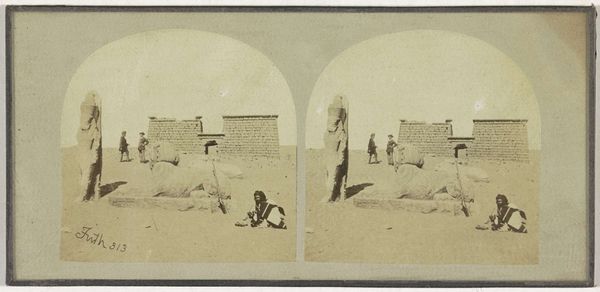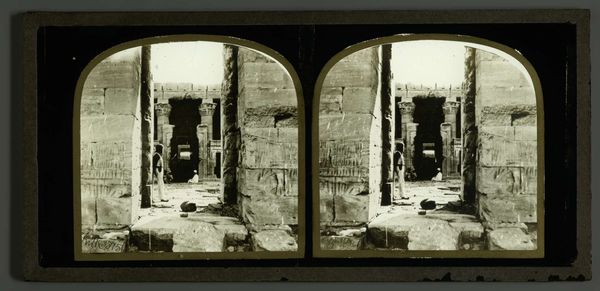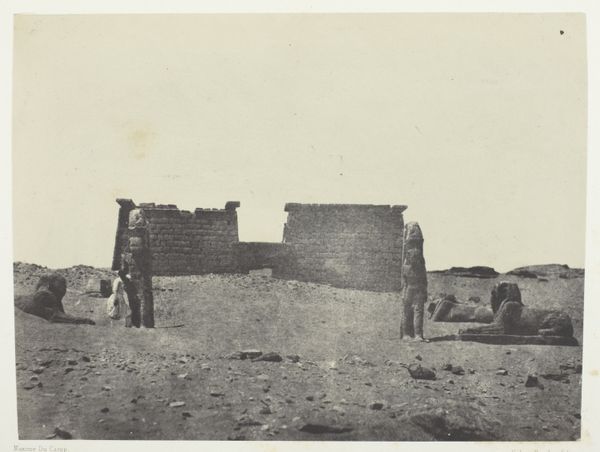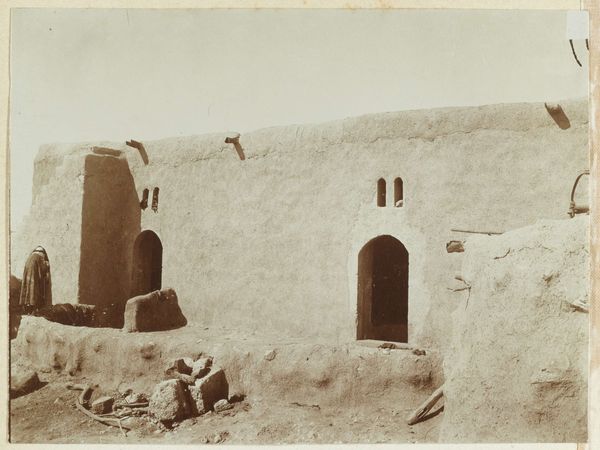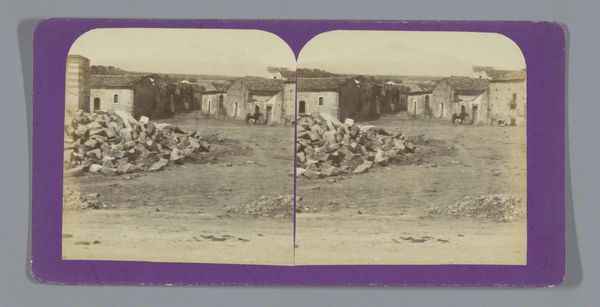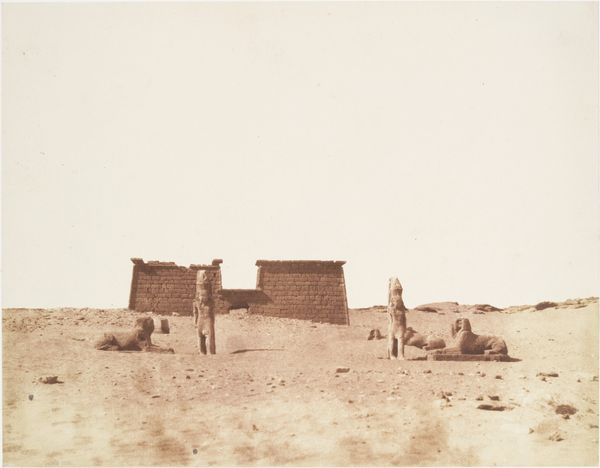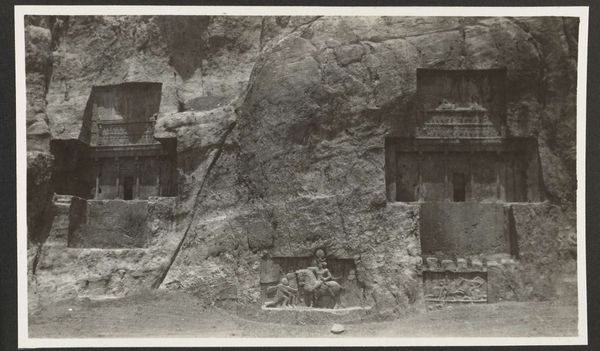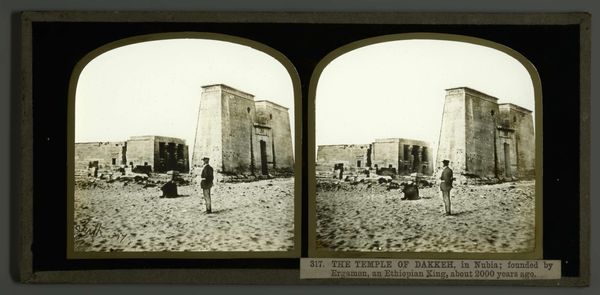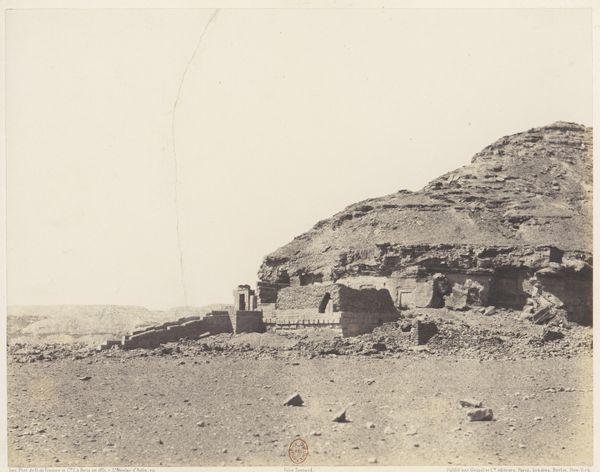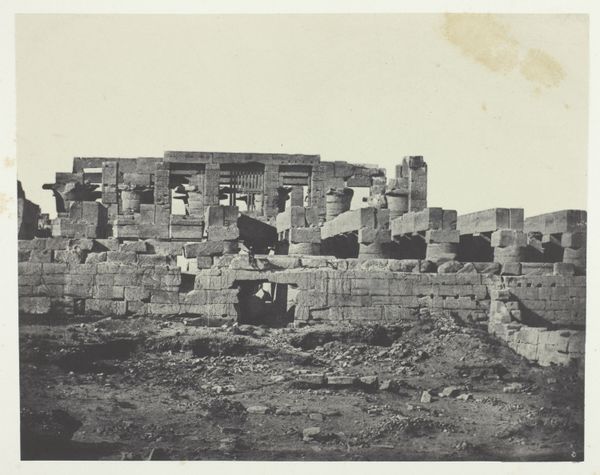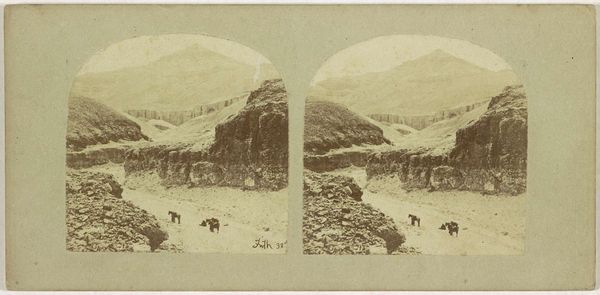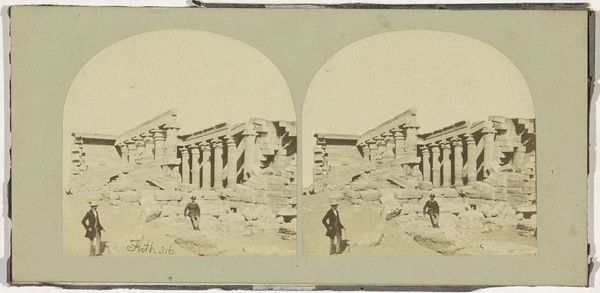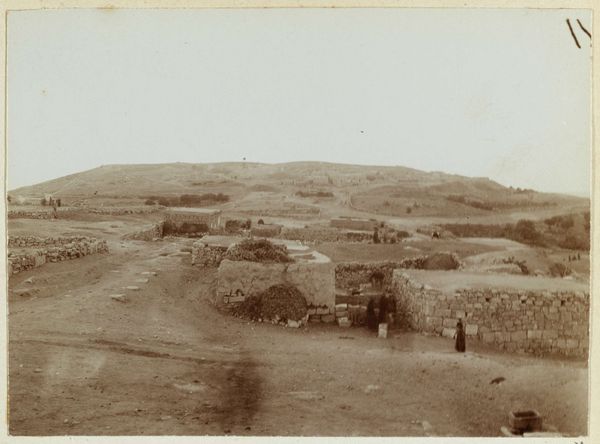
photography, site-specific, gelatin-silver-print
#
sculpture
#
landscape
#
ancient-egyptian-art
#
photography
#
ancient-mediterranean
#
site-specific
#
gelatin-silver-print
Dimensions: height 75 mm, width 150 mm
Copyright: Rijks Museum: Open Domain
This stereograph of the Temple of Derr in Nubia was made by Francis Frith, a British photographer, sometime in the mid-19th century. Frith’s practice was deeply entwined with British colonialism. He traveled extensively in the Middle East, documenting ancient sites and contemporary life, and his images were then mass-produced and sold to a Western audience eager to consume exotic views of distant lands. Photography at this time involved laborious processes, from preparing the glass plate negatives to printing the final images. Frith employed local labor to assist with the logistics of his expeditions, further embedding his work in the complex social dynamics of the region. The stereograph format itself is significant. By presenting two slightly different images side-by-side, it creates a three-dimensional effect when viewed through a special device. This heightened sense of realism catered to the Victorian fascination with scientific accuracy and immersive experiences. Ultimately, Frith’s photographs, like this one, offer a window into both the ancient world and the 19th-century world of imperial ambition and technological innovation.
Comments
No comments
Be the first to comment and join the conversation on the ultimate creative platform.
